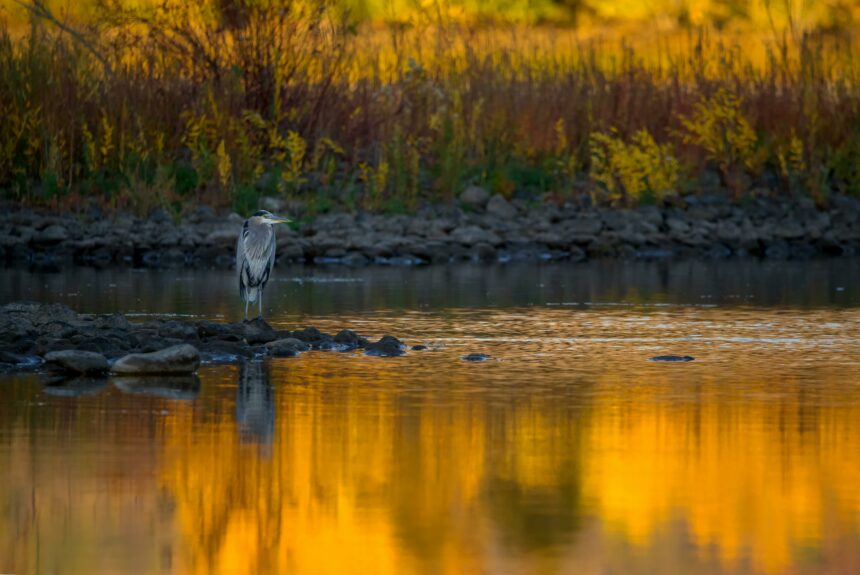Wetlands are a vital natural resource and essential for supporting ecological biodiversity. The United States boasted an estimated 221 million acres of wetlands when European settlers first arrived, but, according to a recent congressional report, that figure had dwindled to 116.4 million acres in 2019. The U.S. continues to lose wetlands at an alarming rate—approximately 21,000 acres of wetlands are lost every year to development, agriculture, drainage, and more.
Fortunately, solutions exist and the private sector might be poised to lead.
>>>READ: How the Florida Wildlife Corridor Can Lessen the Impacts of Climate Change
Law professors Steph Tai (Nelson Institute for Environmental Studies, University of Wisconsin-Madison) and Michael Vandenbergh (Energy, Environment and Land Use Program, Vanderbilt University) recently offered a preview of research they will soon publish in the Minnesota Law Review. Their research focuses on how private environmental governance can protect American wetlands.
The study found the following to be most effective in defending wetlands.
Guidance from Banks and Investors
Tai and Vandenbergh argue that large institutional investors and lenders have a role to play in protecting wetlands. These financial institutions could insist that developers seeking loans follow best practices for wetland protection. Lenders could include environmental risk assessments as part of their lending procedures and use the information to help mitigate the risk of wetland destruction. They could also enter into agreements where some sort of compensation is given in the case of unavoidable impact on wetlands.
This concept is not brand new. Mitigation banking, a form of green investment, is a way to protect wetlands. The use of mitigation banking functions much like carbon credits. Companies that are hard to decarbonize might buy carbon offsets, which reduces carbon emissions elsewhere to ‘offset’ the carbon emissions created by that company. In the same way, developers that are destroying habitat in one place might purchase a mitigation ‘credit’ to protect land elsewhere. While there are likely many different ways the financial sector can work to protect vulnerable wetlands, involvement in green investing like mitigation banking could be one path forward.
Involvement from Flood Risk Insurers
Wetlands serve as excellent buffers against flooding, protecting private property. This sort of flood mitigation capability means that insurers who offer flood insurance have a particular interest in seeing wetlands protected.
“Private insurers could refuse coverage to properties that significantly degrade wetlands no longer protected after Sackett [Sackett v. Environmental Protection Agency], or they could make coverage contingent on binding commitments not to degrade wetlands,”Tai and Vandenbergh explain. “And conservation groups could work with private insurers to develop climate-focused coverage for particularly sensitive wetlands left uncovered after Sackett.”
The Nature Conservancy provides an example of how a conservation group could protect wetlands through insurance. The organization insured Hawaii’s coral reefs in 2022. If hurricanes or tropical storms damage the reefs, the insurance payout would offer the funds to restore them. A similar agreement could be effective for protecting wetlands.
Certifications and Supply Chain Leverage
Certification bodies could help create paths for consumers, whether individual or institutional, to use their purchasing power to support wetland protection. A certificate could be created for products and businesses that are wetland-friendly, functioning similarly to the fair trade certification. Tai and Vandenbergh also encourage increased use of the Leadership in Energy and Environmental Design (LEED) certification as it already includes some wetland protections that could easily be bolstered.
>>>READ: Shrimp Farming Can Save Mangroves
Corporations could follow the lead of companies like Whole Foods Market or Albertsons in setting sustainability practices that dictate their supply chain decisions. Companies could develop contracts with suppliers that include an agreement to not damage wetlands. Farming, construction, and forestry are three industries with a huge impact on American wetlands and could see the most success from developing these agreements.
The U.S. Fish and Wildlife Service estimates that 40 percent of plant and animal species live and breed within wetlands, making these areas some of our most biodiverse and productive habitats. Through private sector intervention, our country could protect and restore wetlands.
Kelvey Vander Hart is a native Iowan, a member of the American Conservation Coalition, and a communications specialist at Reason Foundation.
The views and opinions expressed are those of the author’s and do not necessarily reflect the official policy or position of C3.
